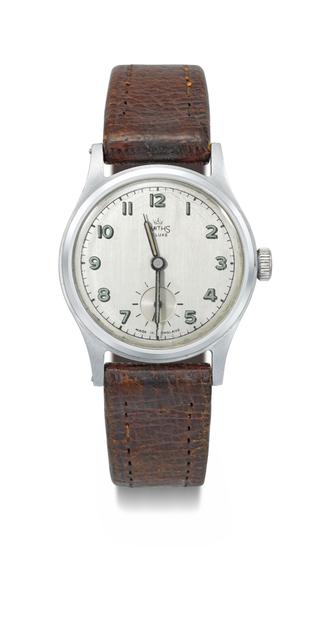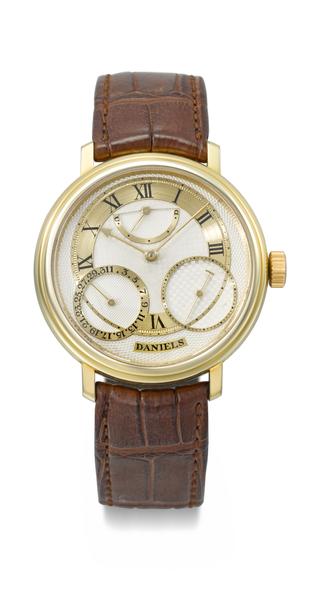

Lever escapement watch by Richard Dover Statter and Thomas Statter.
The main enamel dial is divided into 10 hours, each subdivided into ten. The hands move anti-clockwise, the centre seconds hand dividing a minute into 100 seconds. Inscribed ‘The true basis of a universal Decimal system’ Signed ‘Richd. Dover Statter & Thos. Statter, Liverpool No.1’. 1862
Richard Dover Statter wrote a pamphlet in 1856 extolling the merits of a decimalised system of time. In it he explained the function of this watch, made by his brother Thomas. Suffice to say, his concept did not catch on.
The standardisation of time according to decimal units has existed since the 1st millennium BC when the Chinese used a system of decimalised minutes. More recently and as part of a wider plan to decimalise all forms of measurement including currency, the French, soon after their Revolution of 1789, adopted decimal time. Days counted 10 hours, the hour 100 minutes and the minute 100 seconds. The system became official in 1793 but by 1805 the venture was discreetly abandoned.
Clockmakers Museum No. 493
Details
- Category:
- Clockmakers
- Collection:
- The Worshipful Company of Clockmakers
- Object Number:
- L2015-3391
- Materials:
- gold (metal), enamel, brass (copper, zinc alloy), steel (metal) and glass
- type:
- watch and lever movement
- credit:
- Lent by the Worshipful Company of Clockmakers




